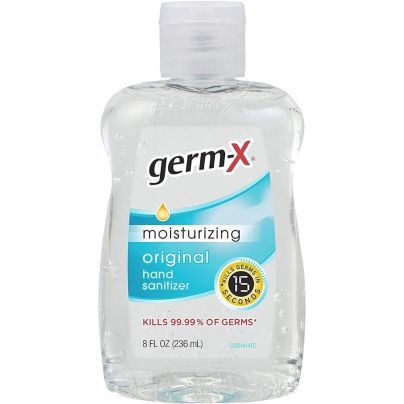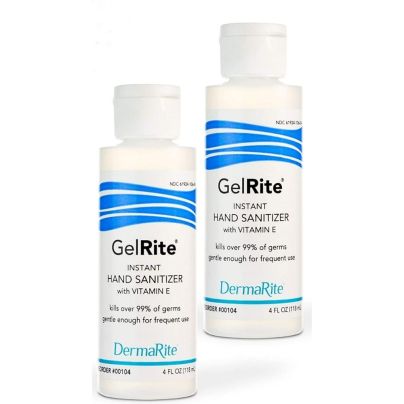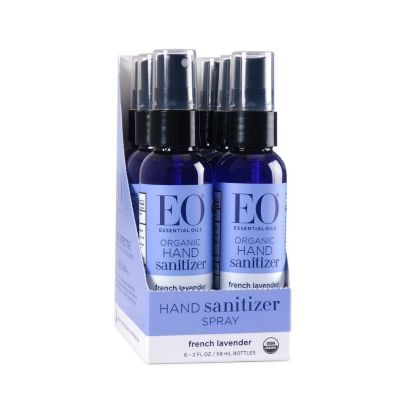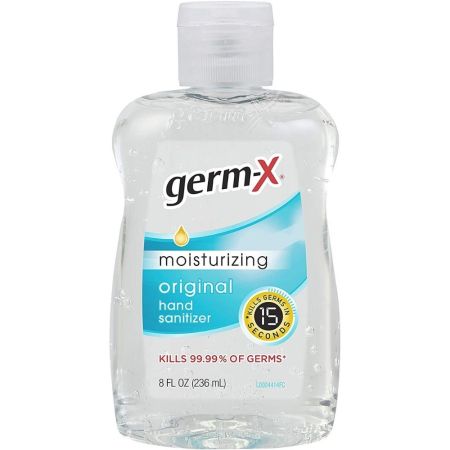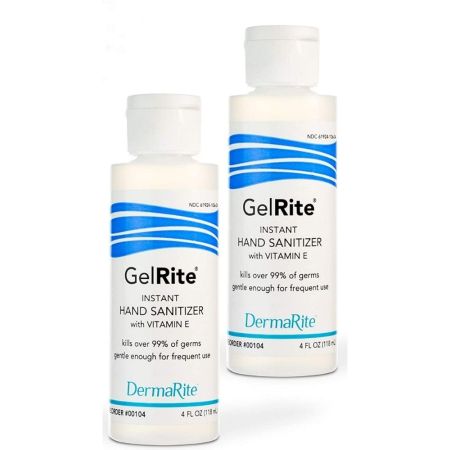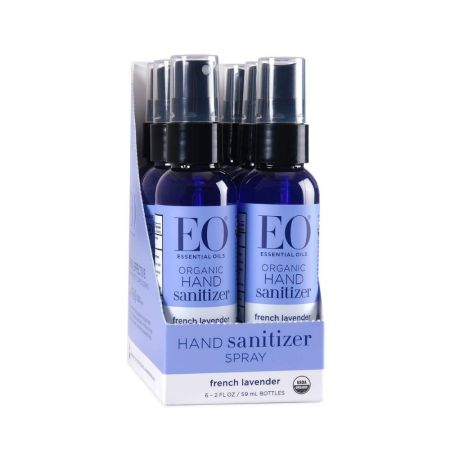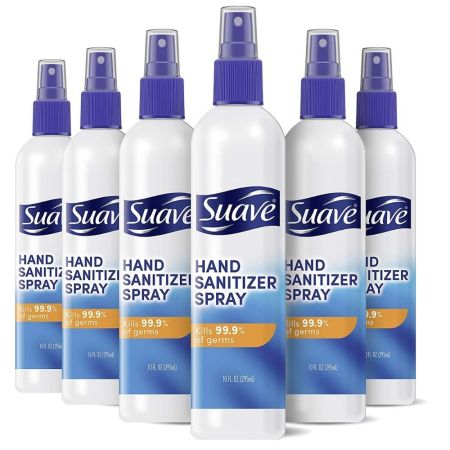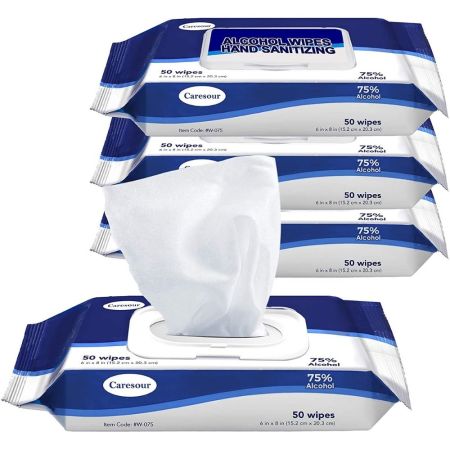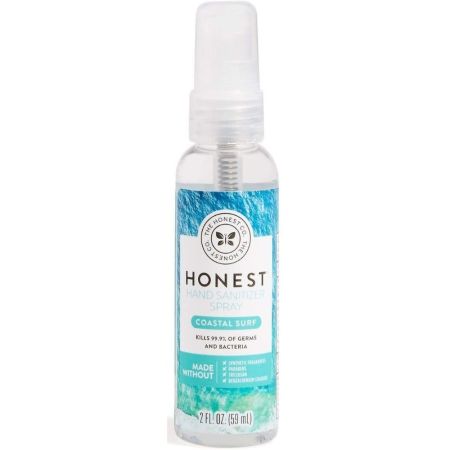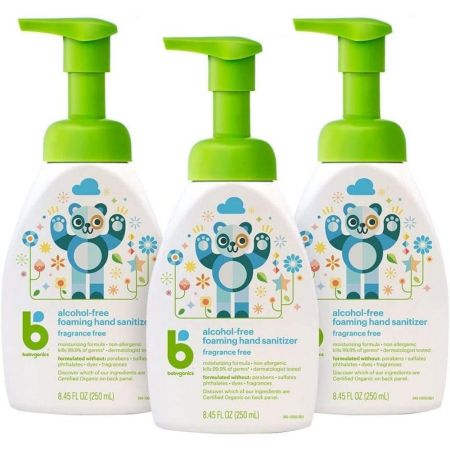We may earn revenue from the products available on this page and participate in affiliate programs. Learn More ›
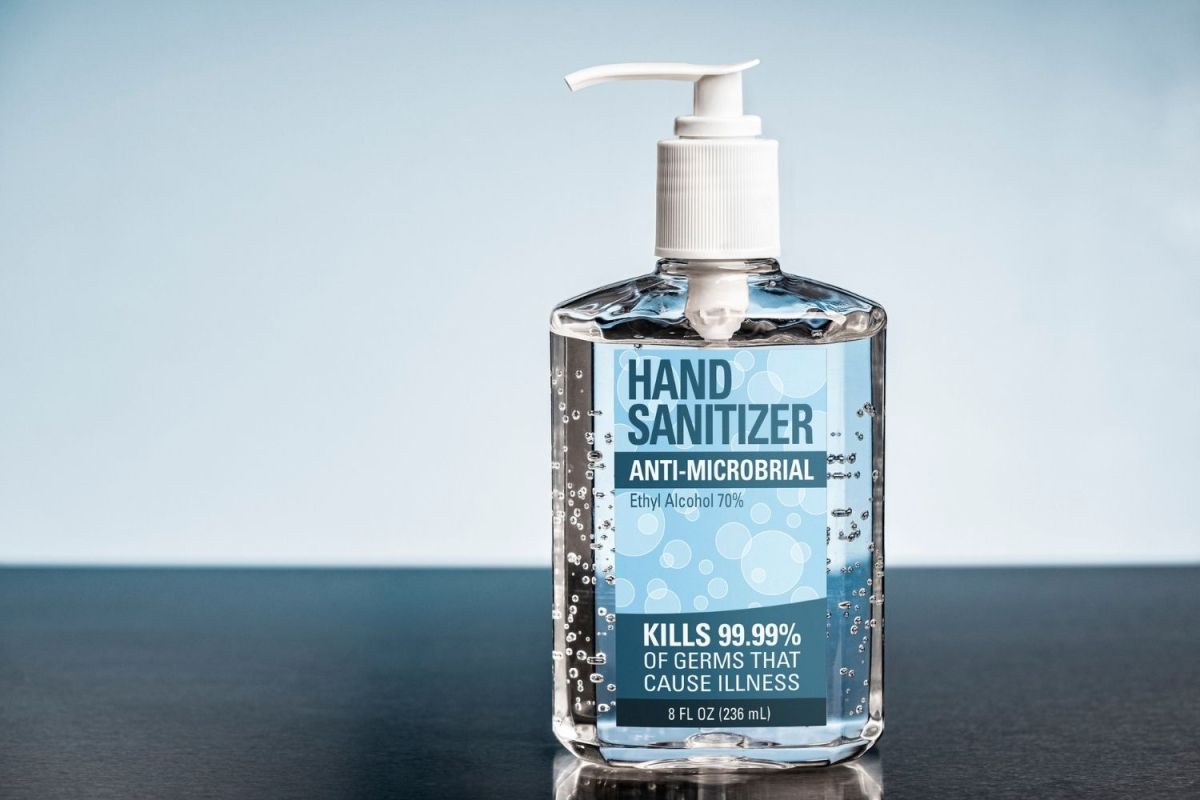
Since the mid-1960s, hand sanitizer has been a reliable method for preventing germs, especially when access to soap and water is limited or unavailable. Moreover, it’s become a staple of everyday life to help limit the spread of infectious diseases.
While you can concoct your own hand sanitizer, health officials say that’s a risky move―the wrong combination could lead to skin damage. Instead, to stave off germs and keep you and your family safe, select the best hand sanitizer from a trusted manufacturer. This guide explores the important considerations and some of the most reliable, best hand sanitizer products on the market.
- BEST OVERALL: Germ-X Original Hand Sanitizer
- BEST TRAVEL SIZE: DermaRite GelRite Instant Hand Sanitizer Gel
- BEST NATURAL: EO Organic Hand Sanitizer Spray: French Lavender
- BEST SPRAY: Suave Hand Sanitizer Alcohol Based
- BEST WIPES: Caresour Advanced 75% Alcohol Hand Sanitizer Wipes
- BEST SMELL: The Honest Company Hand Sanitizer Spray, Coastal Surf
- BEST FOR SENSITIVE SKIN: Babyganics Alcohol-Free Foaming Hand Sanitizer
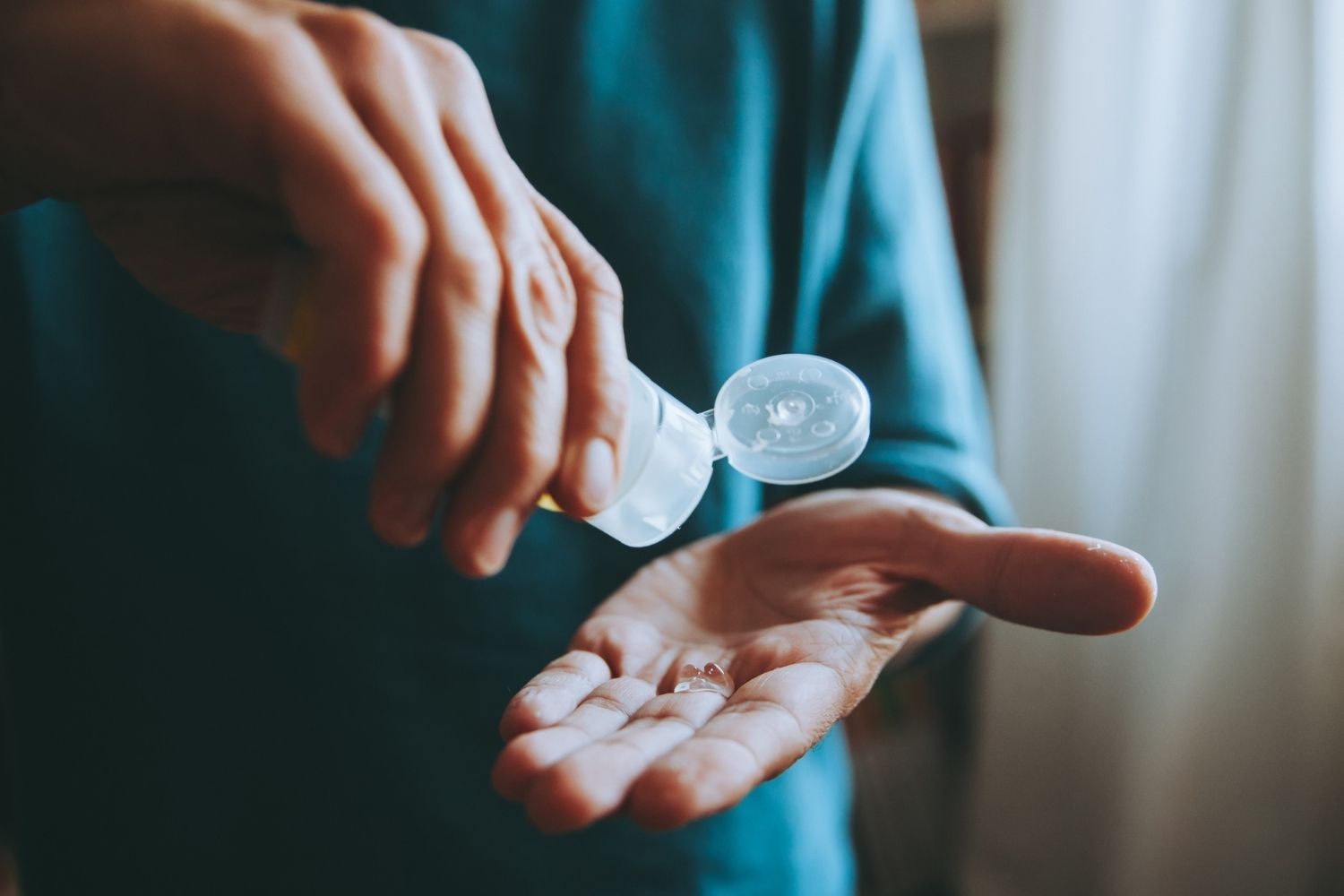
Before You Buy Hand Sanitizer
While hand sanitizer is a convenient way to reduce germs, in some people, it can cause negative reactions. Health care professionals have reported dermatitis or skin irritation in connection with sanitizer use. Additionally, some people may experience allergic reactions to hand sanitizer, including hives, skin peeling, and cracking. When using hand sanitizer, monitor your skin for any problems that occur after usage. Some users have to use a sanitizer without alcohol or consult their doctor.
Note that The Centers for Disease Control and Prevention (CDC) reports that handwashing is still the best way to protect against germs: Hand sanitizer is not the equivalent of handwashing.
Types of Hand Sanitizers
The Federal Drug Administration (FDA) mandates certain requirements for hand sanitizers that affect the bacteria-fighting agent component they contain. The amount of the active sanitizing ingredient also affects its efficacy. Keep reading to learn more about the different types of hand sanitizers.
Alcohol-Based
The FDA recommends that hand sanitizer should contain alcohol as a suitable germ-killing alternative to handwashing. When sanitizer is labeled as “alcohol-based,” the alcohol is probably ethanol, although isopropyl alcohol is the other type of alcohol commonly used in sanitizer. Per the FDA, to be effective, hand sanitizers should contain at least 60 percent of ethanol or at least 75 percent of isopropyl alcohol.
However, alcohol can dry your skin and may cause a rash, so try not to use it more often than necessary.
Alcohol-Free
The CDC cites research that reveals that hand sanitizers without alcohol are slightly less effective than their alcohol-based counterparts. However, the alcohol-free product is still considered to be of some use for those allergic to alcohol-based products. In an alcohol-free sanitizer, the active ingredient is benzalkonium chloride, a type of cleaning agent often used in soaps, shampoos, and other products.
Alcohol-free hand sanitizer is gentler on the skin.
What to Consider When Choosing the Best Hand Sanitizer
When searching for the best hand sanitizer, consider several features, including its ingredients and the amount of alcohol it contains. No matter which one you choose, be sure you use it correctly to increase its effectiveness.
Ingredients
In addition to alcohol or benzalkonium chloride as active ingredients, hand sanitizer can contain glycerin or other ingredients to moisturize the skin. Occasionally, aloe or essential oils ingredients help improve the scent.
A note of caution: The FDA cautions against using sanitizers made with methanol, or wood alcohol. Research performed in 2020 reports that this type of alcohol, when absorbed into the skin, can cause health problems.
Alcohol Percentage
Choose a product that contains at least 60 percent ethyl alcohol (the type in beverages like beer or vodka) or 70 percent isopropyl alcohol (also known as rubbing alcohol).
Effectiveness
When used correctly, hand sanitizer can kill up to 99 percent of bacteria, making it a defense against the novel coronavirus, the flu, and other viruses. If your hands are soiled with dirt, don’t use hand sanitizer before washing them with soap and water. Your hands must be clean before hand sanitizer can work properly.
Application
Hand sanitizer is manufactured in several different forms: gel, wipes, foam, and spray. Research reveals no real difference in the efficacy of the various kinds of sanitizer, although foam dries faster than gel.
- Gel hand sanitizer is the most common medium for hand sanitizer, which makes it convenient to carry in a travel size or place on a desk.
- Hand sanitizer wipes also are convenient for users on the go. Wipes are usually sold in individual packets. If they’re in a dispenser-type container, each wipe is perforated, so it can be torn away from the rest of the roll.
- Foam hand sanitizer is commonly found in public places, but bottles also are sold for personal use.
- Spray-on hand sanitizer, which is good for travel, is also available. Try to choose one with either a cap or a reversible spray head to avoid leakage when not in use.
Volume
When choosing how much hand sanitizer to keep on hand, remember that it has an expiration date; in fact, the FDA advises that remains effective up to three years after purchase. After that, the alcohol begins to evaporate. When buying sanitizer, estimate how much you might go through in a couple of years.
Whatever size or type of hand sanitizer you buy, experts recommend using it liberally. Follow these steps:
- Squirt 3 milliliters (more than ½ teaspoon) of hand sanitizer gel on your hands for maximum effectiveness. Research published in the American Journal of Infection Control reports that filling the palm of your hand, the typical recommendation, is not enough.
- One hand sanitizer wipe is large enough for both hands. However, read the label on the wipes; disinfectant wipes that use chemicals are too harsh for your hands.
- Four pumps of hand sanitizer spray should effectively sanitize your hands.
Moisturizing Agents
Hand sanitizer can dry skin and hands, especially if used frequently. Some hand sanitizers also contain moisturizing agents, such as vitamin E, tea tree oil, and glycerin, to provide some skin relief.
When using sanitizers without a moisturizing agent, follow up with a high-quality lotion to help restore moisture to the skin.
Our Top Picks
This list considers all these factors to feature the top hand sanitizers available. These sanitizers are capable of killing 99 percent of germs.
Best Overall
Germ-X Original Hand Sanitizer
See ItFrom one of the leading brands of hand sanitizer, these 8-ounce bottles of Germ-X Original Hand Sanitizer gel contain 62 percent ethyl alcohol to kill germs. The vitamin E in this formula makes it suitable for frequent use; it can moisturize skin with every germ-fighting dollop. It’s not too watery in application and leaves no residue after use.
Best Travel Size
DermaRite GelRite Instant Hand Sanitizer Gel
See ItGelRite’s Instant Hand Sanitizer 4-ounce size is easy to transport. The travel-size squeeze bottle fits conveniently in a purse, gym bag, backpack, or glove compartment. This small bottle gets the job done: Its formula contains 65 percent alcohol to kill germs on contact and vitamin E to moisturize the skin with each use.
Best Natural
EO Organic Hand Sanitizer Spray: French Lavender
See ItThis EO Organic Hand Sanitizer Spray contains 62 percent ethanol, an alcohol derived naturally from sugar cane that meets FDA standards for an effective sanitizer. The rest of this product is eco-friendly as well: It contains no GMOs, fake fragrances, or artificial dyes. This hand sanitizer spray features a French lavender essential oil ingredient, but lemon and eucalyptus scents also are available.
Best Spray
Suave Hand Sanitizer Alcohol Based
See ItFor those who prefer a hand sanitizer spray, consider Suave’s Hand Sanitizer, which contains 65 percent ethyl alcohol. Its pump is easy to use and doesn’t require extra force to dispense the sanitizer. It includes glycerin to combat skin dryness. It’s also offered in travel-sized packaging and doesn’t have an overwhelmingly obvious alcohol smell.
Best Wipes
Caresour Advanced 75% Alcohol Hand Sanitizer Wipes
See ItCarrying hand sanitizer wipes makes them easy to distribute to friends and family. Also use them to wipe down surfaces. These Caresour Advanced Hand Sanitizer Wipes are made with 75 percent alcohol, which exceeds federal guidelines, and they come in a convenient 50 pack. Take one; then replace the package’s easy-seal hard plastic cap to keep the remaining wipes from drying out.
Best Smell
The Honest Company Hand Sanitizer Spray, Coastal Surf
See ItThe Honest Company’s Coastal Surf hand sanitizer balances its 62 percent volume of ethyl alcohol with a scent reminiscent of an ocean breeze. This hand sanitizer spray has been tested by dermatologists and deemed hypoallergenic. It’s made with natural ingredients, including aloe, to leave the skin feeling soft. Not only is the scent pleasant, but this formula leaves no sticky residue behind.
Best for Sensitive Skin
Babyganics Alcohol-Free Foaming Hand Sanitizer
See ItDespite its name, Babygenics Alcohol-Free Foaming Hand Sanitizer is not just for kids. Its foaming formula avoids harsh chemicals and provides the right amount of protection from germs, while soothing your troubled skin―a winning combination for those with sensitive skin or skin conditions. It contains natural, plant-derived ingredients, and it’s unscented. An alcohol-free hand sanitizer, it relies on the active ingredient benzalkonium chloride. However, this product has been tested and demonstrated to kill 99.9 percent of germs.
FAQs About Hand Sanitizers
When is the best time to use hand sanitizer, and how long does it stay on your hands? How do you handle any adverse reactions? Learn the answers to these additional questions before you shop for the sanitizer that’s right for you.
Q. How does hand sanitizer work?
The active ingredient in hand sanitizer, either alcohol or benzalkonium chloride, kills microbial cells that can cause illness.
Q. When should I use hand sanitizer?
Use hand sanitizer as an alternative to washing with soap and water, especially when away from a sink. According to the CDC, washing your hands is the best way to prevent infection.
Q. What can I do if I get a rash or another reaction to hand sanitizer?
Consider switching to a product with natural ingredients. In addition, you can try regularly moisturizing your skin with lotion or Vaseline.
Q. How long do hand sanitizers last?
Most hand sanitizers are effective for only about 2 minutes after application. Hand sanitizer can last on the shelf for two to three years.
